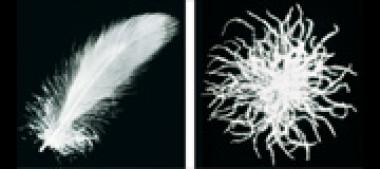What are the regions of origin of down and feathers?
Raw down and feathers, the so-called raw material, traditionally come from Eastern Europe (Hungary, Poland) and Asia (China, Taiwan) but countries like Canada, France and Russia also supply significant quantities. The regions of area are also called provenance.
The filling material is mainly imported from countries in which poultry is mainly kept for the purpose of human nutrition and therefore intensive poultry farming is conducted. That applies to China among others. In contrast, poultry farming in Hungary and Poland is conducted with the main goal of meat export. In France, especially those ducks are bred whose feathers can be partly used for the home requirements and partly for the export.
The climate in which the birds live plays an important role for the quality of down and feathers. Geese and ducks, which live in regions with short summers and long winters (e.g. Iceland, Canada, Siberia) develop a correspondent plumage that protects them against extreme cold. Those down and feathers therefore have an especial high heat-insulating capacity.














